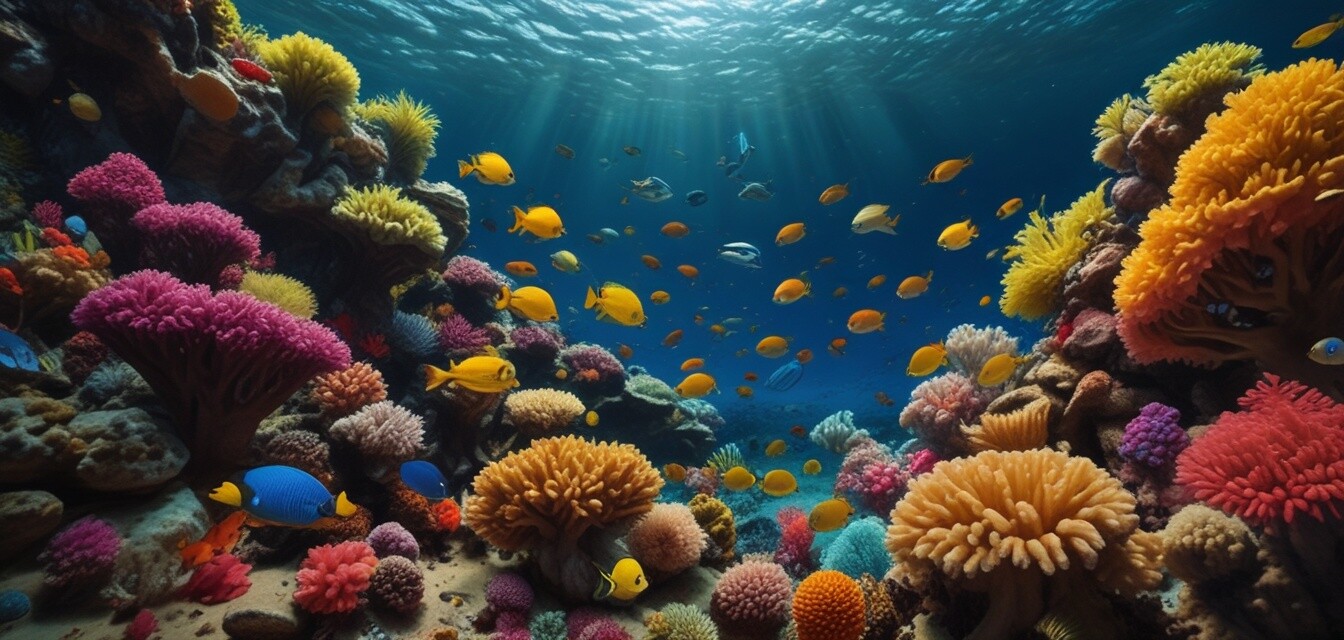
Incorporating Marine Life into Your Underwater Shots
Key Takeaways
- Understanding marine life behavior enhances your composition.
- Lighting plays a crucial role in making marine subjects stand out.
- Patience is essential when photographing wildlife.
- Use wide-angle lenses to capture both the subject and its environment.
- Respect marine life and the ecosystem to ensure sustainable photography.
Underwater photography offers a unique and breathtaking way to capture the beauty of our oceans and the life within them. Incorporating marine life into your shots can transform a simple underwater scene into a vivid narrative, telling stories of the ocean's wonders. This guide will explore key techniques to effectively include marine life in your underwater photography, ensuring your images are not only captivating but also respectful to the delicate ecosystems they represent.
Understanding marine life behavior
To successfully photograph marine life, it is essential to understand their behavior. Knowing when and where to find specific species can increase your chances of capturing stunning images. Consider the following:
- Feeding times: Many marine creatures are more active during certain times of day.
- Breeding seasons: Understand peak breeding seasons to witness remarkable behaviors.
- Habitat preferences: Different species prefer different environments, such as rocky surfaces, soft corals, or open waters.
Choosing the right gear
Your equipment plays a significant role in capturing stunning underwater shots. Here are some essential gear considerations:
| Gear Type | Description |
|---|---|
| Camera | Choose a waterproof camera that’s suitable for underwater use. |
| Lenses | Wide-angle lenses are ideal for capturing both subjects and their surrounding habitat. |
| Lighting | External strobe lights or video lights can help illuminate your subjects and enhance colors. |
Tips for composing marine life shots
Effective composition can make or break your underwater photos. Here are some tips to consider:
- Rule of thirds: Position your subjects according to the rule of thirds to create a balanced image.
- Foreground interest: Introduce elements from the environment into your shot, such as coral or seaweed, to add depth.
- Eye level: Try to shoot at the same level as your subjects for a more intimate feel.
Utilizing lighting effectively
Underwater photography often presents challenges with lighting, particularly as you go deeper. Here are a few tips for effective lighting:
- Natural light: Ideally, shoot during sunny days when natural light penetrates the water.
- Strobe lighting: Use strobe lighting to combat the color loss underwater, enhancing the vibrancy of your subjects.
- Adjust white balance: Consider adjusting your camera's white balance settings to maintain true colors.
Patience and respect for marine life
When photographing marine life, patience is critical. Many underwater species will require time to feel comfortable with your presence. Remember to:
- Stay still and allow the subject to approach you.
- Respect their space; don’t invade their surroundings.
- Leave no trace; ensure that your activity does not disturb or harm marine environments.
Diving and potentially harmful techniques
Although it might be tempting to use external equipment that appears to make capturing images easier, be mindful of how they might affect marine life and habitats. Instead, stick to the fundamentals:
- Ground your shots in natural behaviors rather than forced interactions.
- Avoid using bait to lure marine life as it disturbs ecological balance.
Sharing your work ethically
Once you've captured stunning shots of marine life, consider how you share your work to advocate for marine conservation:
- Support marine conservation efforts through your imagery.
- Share stories behind your shots to educate and inspire others.
- Use social media wisely to spread awareness of marine life issues.
Conclusion
Incorporating marine life into your underwater photography not only enhances your artistic expressions but also creates a visual narrative that can draw attention to the beauty and fragility of our oceans. By understanding marine life behavior, choosing the right gear, and practicing ethical photography techniques, you can create compelling images that benefit not just your portfolio, but also marine conservation efforts. For more tips on underwater photography, check out our Tips and Techniques section.
Beginners Section
If you are just starting out in underwater photography, consider the following tips:
- Practice shooting in shallow waters to build confidence.
- Consider taking a photography course focused on underwater techniques.
- Study photos from seasoned underwater photographers for inspiration.
Pros
- Creates stunning visual narratives that highlight underwater ecosystems.
- Enhances awareness and appreciation of marine conservation.
- Encourages exploration and adventure.
Cons
- Requires specialized equipment and training.
- Can be challenging in terms of lighting and exposure.
- Potential ecological disturbance if not practiced respectfully.

